#philip yordan
Explore tagged Tumblr posts
Text
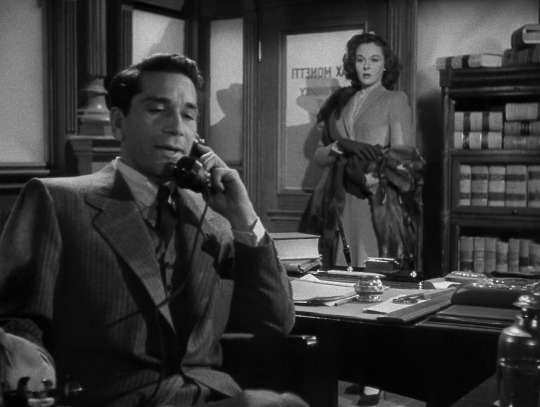

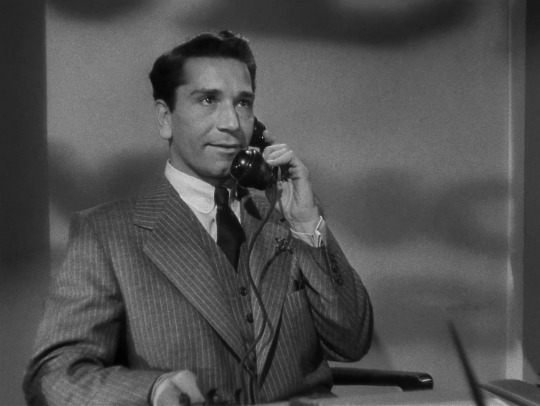



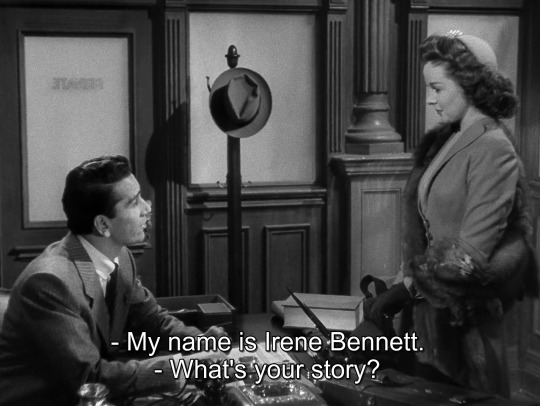


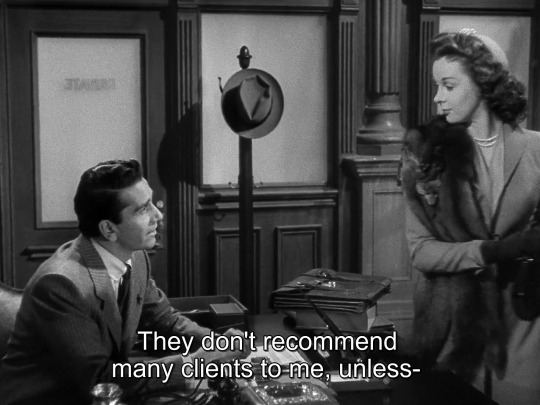
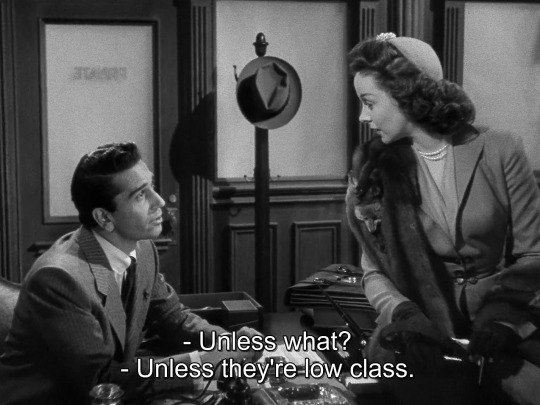
House of Strangers (1949).
#house of strangers#house of strangers (1949#joseph l. mankiewicz#richard conte#susan hayward#milton r. krasner#harmon jones#lyle wheeler#george w. davis#thomas little#walter m. scott#philip yordan#jerome weidman
11 notes
·
View notes
Text
Vijftien jaar geleden zag ik "Krakatoa: East of Java" (Bernard Kowalski, 1968)
Op 01/08/2009 zag ik “Krakatoa: East of Java” van Bernard Kowalski uit 1968. Continue reading Vijftien jaar geleden zag ik “Krakatoa: East of Java” (Bernard Kowalski, 1968)
#Alex Weldon#Bernard Gordon#Bernard Kowalski#Brian Keith#Eugène Lourié#Maximilian Schell#Philip Yordan
0 notes
Text

Philip Yordan’s “Anna Lucasta” opened at Broadway's Mansfield Theatre on August 30, 1944. Starring Canada Lee, Hilda Simms, Alice Childress, and Alvin Childress, and produced by the American Negro Theater, this was first all-Black production with a non-racial theme on Broadway.
60 notes
·
View notes
Text
Suspense

Monogram Pictures swung for the fences with Frank Tuttle’s SUSPENSE (1946, TCM, YouTube), their first million-dollar picture, Spurred by the success of DILLLINGER (1945), they gave the King Brothers a larger than usual budget, which allowed them to bring in top-tier talent like cinematographer Karl Struss, composer Daniele Amfitheatrof and choreographer Nick Castle. The Kings also found a place for two up-and-comers, actor Barry Sullivan and writer Philip Yordan, along with former Warner Bros. starlet Bonita Granville and fading character actor Eugene Pallette (in his last film). Throw in Belita, Monogram’s answer to Republic’s Vera Hruba Ralston (though a much better actress), and you get one of the world’s few ice-skating films noirs, a picture with some striking images but a plot that seems to go on forever.
Sullivan is an ambitious drifter who left New York under a cloud. He gets hired to sell peanuts at Albert Dekker’s L.A. ice show, where his suggestions get him quickly promoted to a management position under Pallette. There’s only one catch. Sullivan wants to seduce the show’s star, Belita, who happens to be the boss’ wife, and before long she starts falling for him, which is understandable as Dekker is consistently coded as a gay man. Still, Dekker doesn’t want to lose his wife and star, so the rink is set for deadly conflict, though it sometimes seems to take a long time getting there.
The Kings spent a lot of money on sets, including a large ice-skating rink and an impressive two-story mountain getaway. Struss fills the film with shadowy images that often promise more suspense than the story generates. In a subplot, Sullivan is pursued by Granville as a former love from his time in Chicago (the man got around). She goes to some trouble to dig up damaging information about his past only to never use it. You could grow a beard waiting for her to do something that contributes to the plot.
At least the ice-skating numbers move and generate some real interest. Castle stages a nice jitterbug number at the start with Belita as a skating streetwalker so hot you half expect the ice to melt and leave her doing the breaststroke. There’s a daredevil routine with a hoop surrounded by threatening swords. But there’s also a Cuban number featuring “Mr. Babalu,” Miguelito Valdez, singing as the blonde leading lady does an icy version of Cuban dancing. It’s so deliriously edited it borders on high camp, something of which the rest of the film could use a lot more.
youtube
2 notes
·
View notes
Photo

"No Way Out" (1950) is a brilliant noir film debuting the acting career of legendary Sidney Poitier and starring an excellent cast that includes Richard Widmark, Linda Darnell, Stephen McNally, and Mildred Joanne Smith. The movie also features Ruby Dee and Ossie Davis in their first film together. By 1950, black actors with significant roles in Hollywood films were still uncommon, particularly in non-stereotypical roles such as medical doctors. Moreover, the Race Era was ending, so the opportunities for black actors mostly faded. However, a year before, James Edwards starred in "Home of the Brave," and Juano Hernadez starred in "Intruders in the Dust," which set a new trend for black male actors in Hollywood. In addition, the presence of Mildred Smith as the supportive and loving wife living in a middle-class family added to this new narrative. These subtle differences were giant leaps for Hollywood as it was risky for them to show black people other than stereotypical servants, field hands, mammies, Uncle Tom's, or slow-talking dimwits. So how does "No Way Out" differ from some of its precessors? "Home of the Brave" is about a black man in a war setting. "Lost Boundaries" and "Pinky" had a 'passing for white' theme with different story premises. "No Way Out" tells the story of a black man in a white man's everyday world as a professional. Darryl F. Zanuck produced the 1949 film "Pinky" and enthusiastically backed "No Way Out" after reading Lesser Samuels' script and soon assigned Joseph L. Mankiewicz to add his expertise in filmmaking. Zanuck wanted both movies made as they dealt with two different subject matters of black life. The search for a suitable actor for the black doctor Luther Brooks was a nationwide search by Zanuck and casting director William Gordon. Several dozen actors auditioned, but eventually, Gordon selected 23-year-old Poitier for the role. Ruby and Ossie Davies starred in the Broadway and American Negro Theatre play, "Anna Lucasta" for the West Coast road company, while Potier played lead in the Eastern show. However, the head of the American Negro Theatre of the New York Actors Guild, Fredrick O'Neal, was among the biggest supporters of the movie. He remarked: "It's the most honest (scripts) I have ever read on the subject. The resemblance between this story and life is strictly truthful." Overall, this movie has many layers, and if you're critical like I am, you'll see many social components addressed on race, class, and patriarchy. It's a beautiful cinematographic film with intense emotion and drama. The film dives into how hate blinds people from the truth, even when their life depends on it. Richard Widmark did a superb job in his challenging role as the hate-filled low-class criminal mourning the death of this brother and the symbolic end to his truths. And Linda Darnell, the bewildered damsel trying to figure out the world around her while struggling with her prejudices, did an excellent job in the movie. I highly recommend this film and all of its glory and energy. You will be satisfied. Director: Joseph L. Mankiewicz Writers: Joseph L. Mankiewicz, Lesser Samuels, Philip Yordan (contract writer) Starring Sidney Poitier, Richard Widmark, Linda Darnell, Stephen McNally, Mildred Joanne Smith, Dots Johnson, Ossie Davis, Ruby Dee, Harry Bellaver, Stanley Ridges, Maude Simmons, Amanda Randolph Storyline When a white patient in a hospital dies under the care of a black intern (Sidney Poitier), the victim's racist brother (Richard Widmark) seeks to destroy the doctor's career. Although the hospital's idealistic Chief Resident (Stephen McNally) tries to diffuse the escalating tension, the victim's ex-wife (Linda Darnell) seems to go along with the vengeance-seeker until she realizes she's on the wrong side. https://www.daarac.ngo https://www.daaracarchive.org/2017/09/no-way-out-1950.html Available on Blu-ray (Region B only). https://www.amazon.com/Way-Blu-Ray-combo.../dp/B07BX6Q789 Available on DVD (Region A), but it's out of print. Also, on streaming services. https://www.amazon.com/Way-Out-Fox-Film-Noir/dp/B000CNE08S
8 notes
·
View notes
Text

Alice Childress (October 12, 1916 – August 14, 1994) was a novelist, playwright, and actress acknowledged as “the only African American woman to have written, produced, and published plays for four decades.” She described her work as trying to portray the have-nots in a have society, saying: “My writing attempts to interpret the ‘ordinary’ because they are not ordinary. Each human is uniquely different. Like snowflakes, the human pattern is never cast twice. We are uncommonly and marvelously intricate in thought and action, our problems are most complex and, too often, silently borne.” She became involved in social causes and formed an off-Broadway union for actors.
She took odd jobs to pay for herself, including domestic worker, photo retoucher, assistant machinist, saleslady, and insurance agent. She studied Drama at the American Negro Theatre and performed there for 11 years. She acted in Abram Hill and John Silvera’s On Strivers Row, Theodore Brown’s Natural Man, and Philip Yordan’s Anna Lucasta. There she won acclaim as an actress in numerous other productions, and moved to Broadway with the transfer of ANT’s hit Anna Lucasta, which became the longest-running all-Black play in Broadway history; she won a Tony Award nomination for her starring performance.
In 1949 she began her writing career with the one-act play Florence, which she directed and starred in, and which reflected many of the themes that are characteristic of her later writing, including the empowerment of African American women, interracial politics, and working-class life. In Florence, an African American, Southern, working-class woman, Mama Whitney, decides to travel by train from SC to NYC to retrieve her daughter, Florence, who is a struggling actor. A white woman waiting for the same train offers to help Florence by recommending her for a job as a maid, Mama Whitney decides to send her daughter money instead of bringing her home. Her goal in writing Florence was to “settle an argument with fellow actors who said that in a play about Negroes and whites, only a ‘life and death thing’ like lynching is interesting on stage.” #africanhistory365 #africanexcellence #sigmagammarho
0 notes
Text
things i am basically auto-saving (for now):
John M. Stahl
James Whale, although maybe that's more like Carl Laemmle, Jr.
Douglas Sirk (though I'm letting Thunder on the Hill go)
Ernst Lubitsch
Preston Sturges
honestly most of the early Paramount (The Crime of the Century can go and so can the DeMilles)
blacklisted screenwriters (but I'm really tempted to let Golden Earrings go)
Philip Yordan (sometime front for blacklisted screenwriters but also interesting in his own right)
Frank (and Eleanor) Perry
Andre de Toth
Jacques Tourneur
to a lesser extent, Hugo Fregonese
Joan Harrison (edit: I'm letting Jamaica Inn go)
Shaw Brothers (even though I have a ton and have watched basically none of it. this is one I keep imagining will change)
Golden Harvest
Meiko Kaji
Shinji Somai
Steven Soderbergh
Carroll Baker
most Mexican cinema
most Fritz Lang
a bunch of Nunnally Johnson, though I'm less sure about this
plus by default anything region-locked
1 note
·
View note
Text
SANTIAGO, MATAMOROS

Seguimos en la Calle Santiago, Santiago el Mayor, el de Matamoros, grito de 8 siglos contra un invasor, es la calle mas importante de nuestra querida cuidad de Valladolid, España, que une la Plaza de Zorrilla con nuestra Plaza Mayor, los dos lugares mas importante de la cuidad unido por nuestra calle principal.
Santiago Matamoros fue el grito libertador contra el yugo Islámico.
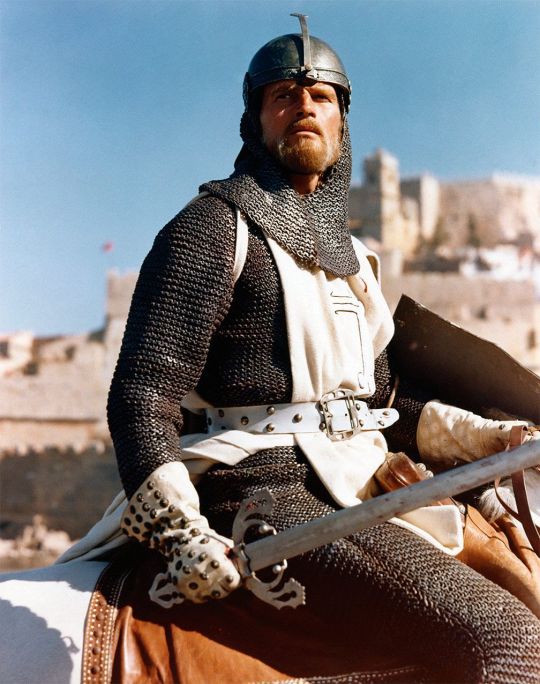
La pregunta que deberíamos hacernos es...
¿Es el Apostal Santiago el mismo Santiago Matamoros? La repuesta corta es SI y NO, una contradictoria paradoja que lleva siglos y tiene su explicación.
El Apostal Santiago, uno de los 12 originales apósteles seguidores de Jesús Cristo aterrizo en Galicia para evangelizar a España.
De Santo a Guerrero hay mucho trecho...
Santiago contra el islam, Asturias es España y el resto es tierra (re)conquistada...(Santiago el Mayor - Wikipedia)
En el siglo xii se redacta en Santiago de Compostela el llamado Privilegio de los Votos, que atribuye al rey Ramiro I una victoria frente a los moros en Clavijo en 844, victoria obtenida gracias a una aparición de Santiago.
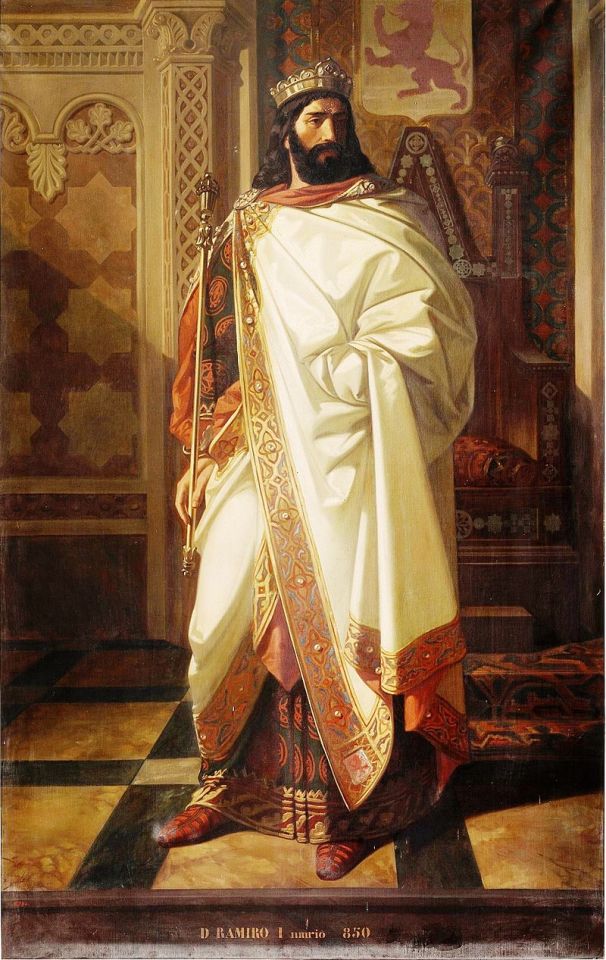
Ramiro I rey de Asturias (Cuadro pintado en 1852 por Isidoro Lozano (Isidoro Santos Lozano Sirgo) (Museum: Museo del Prado)
Agradecido, el rey habría hecho el voto de que todos los habitantes pagasen al Apóstol, o sea a su santuario, una cantidad anual. Según este mismo documento, la victoria en Clavijo puso fin a la entrega anual a los enemigos de un vergonzoso tributo de cien vírgenes cristianas. La primera representación de Santiago a caballo, de principios del siglo xiii en la catedral compostelana, muestra las doncellas arrodilladas ante el caballo de Santiago.

La Batalla de Clavijo - Colección - Museo Nacional del Prado (museodelprado.es)
El miles Christi medieval, imagen poco frecuente, se convierte a partir de la segunda mitad del siglo xv y a lo largo del siglo xvi en Santiago Matamoros, defensor del catolicismo frente a todos sus enemigos: los moros, los herejes y los paganos, cuyos cuerpos o cabezas ruedan entre las patas de su caballo.
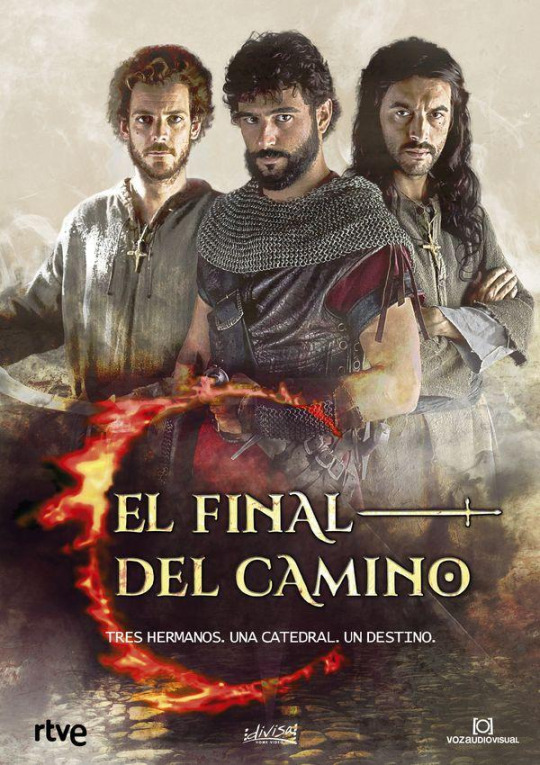
El final del camino (2017) es una serie de televisión dirigida por Miguel Alcantud, Óscar Pedraza y Miguel Conde.
Ambientada en la península ibérica en el siglo xi y comienzos del XII, la serie recrea la construcción de la Catedral de Santiago de Compostela a través de las vivencias de tres hermanos afincados en la ciudad gallega. Como trasfondo, personajes históricos intervienen también en la trama, como es el caso del rey Alfonso VI de León, su esposa Constanza de Borgoña, el obispo Diego Gelmírez, la reina Urraca de León o Raimundo de Borgoña, entre otros. (El final del camino - Wikipedia) IMDb 6'8 TIEMPO 1H 18M
858-1 https://ok.ru/video/1751745890904
Para continuar viendo los demás episodios, (en total son 8), pinche en el siguiente enlace: El final del camino - Serie o al fondo del blog ...
El Cid (1961)
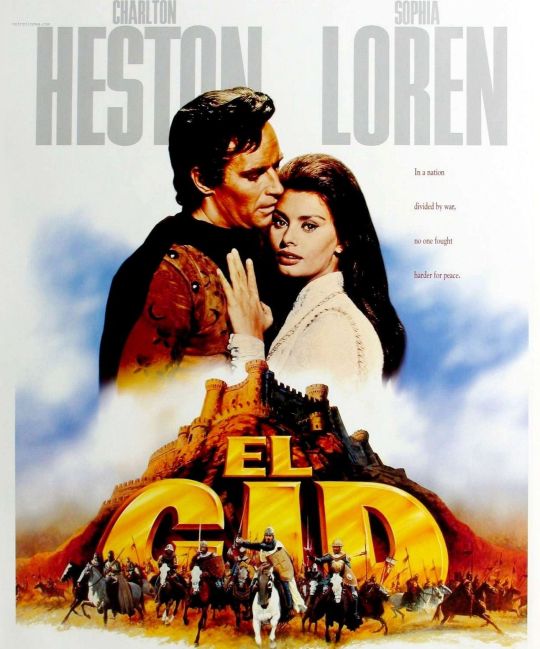
El Cid es una película épica ítalo-estadounidense de 1961 dirigida por Anthony Mann. El guion se atribuye a Fredric M. Frank, Philip Yordan y Ben Barzman, con contribuciones no acreditadas de Bernard Gordon .
Trata de la vida del guerrero castellano Rodrigo Díaz de Vivar, el Cid (del árabe as-sidi , que significa 'el señor'). (El Cid (película) - Wikipedia)
858-2 https://ok.ru/video/2437364714156

Romances del Cid (Joaquín Díaz)
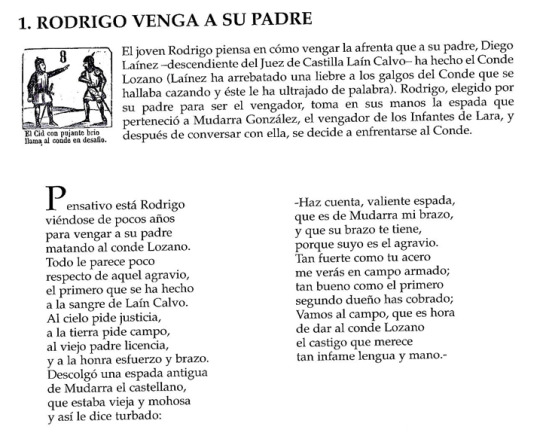
Pincha en el enlace (verde) a continuación para escuchar el disco completo de 15 partidas y el texto: Romances del Cid (Joaquín Díaz)
youtube
858-3 https://youtu.be/JbPw8UCzCcM
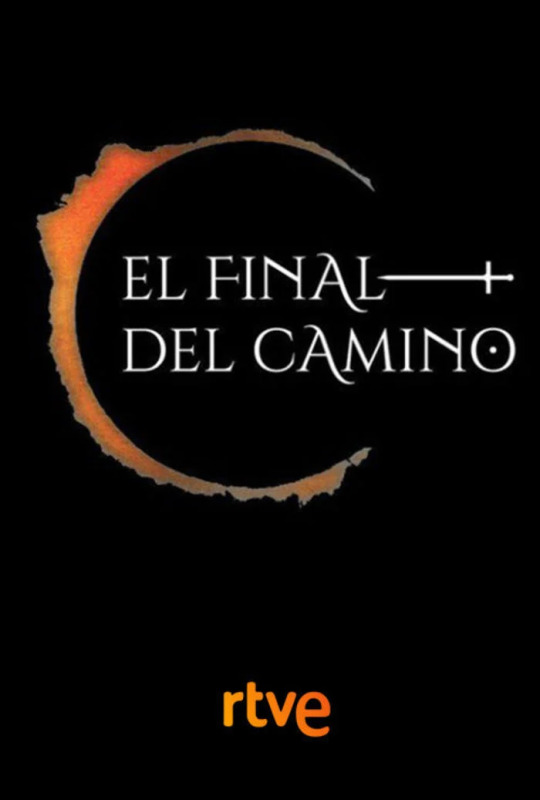
EPISODEO 2: ENLACE https://ok.ru/video/5655431219939
EPISDOEO 3: ENLACE https://ok.ru/video/4093056780925
EPISODIO 4: ENLACE https://ok.ru/video/5655430892259
EPISODIO 5: ENLACE https://ok.ru/video/5655430695651
EPISODIO 6: ENLACE https://ok.ru/video/5655431154403
EPISODIO 7: ENLACE https://ok.ru/video/5655430630115
EPISODIO 8: ENLACE https://ok.ru/video/4093055011453
0 notes
Text
0 notes
Photo
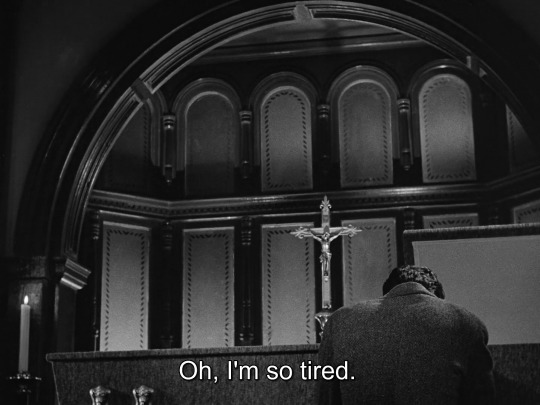
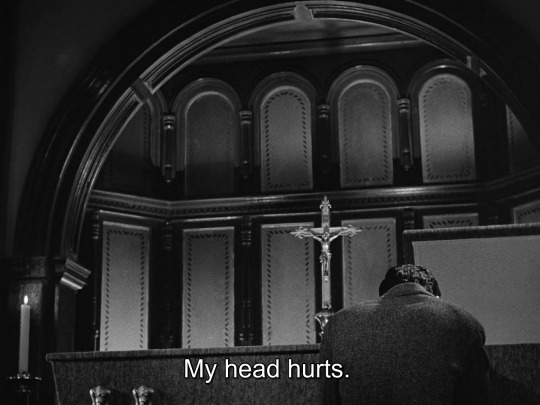

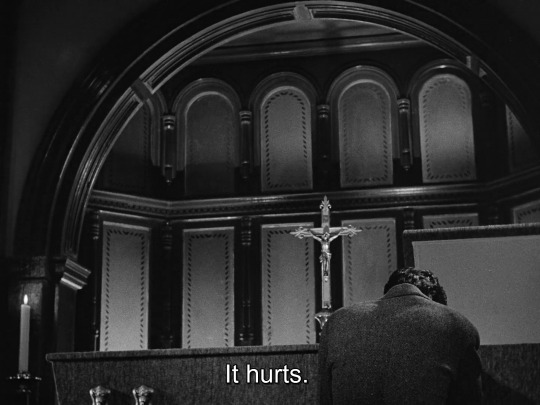

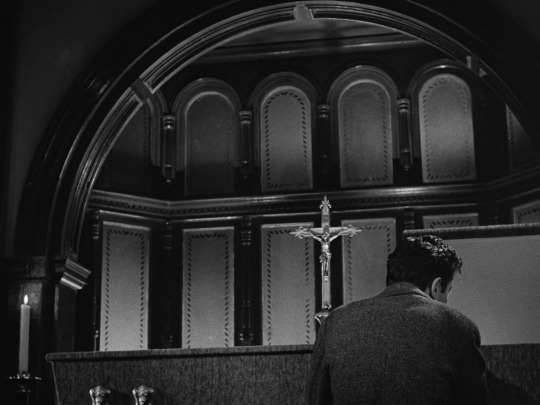
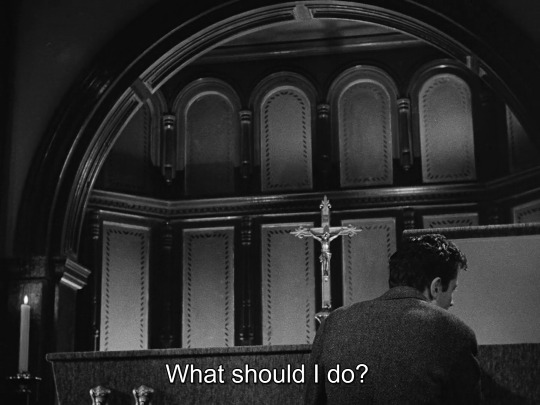


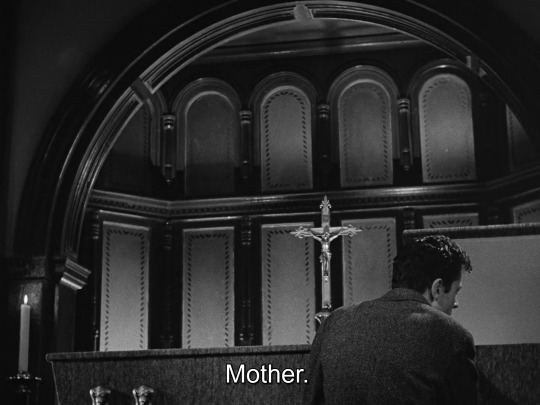
Edge of Doom (Mark Robson, 1950).
#edge of doom (1950)#stronger than fear (1950)#mark robson#farley granger#harry stradling sr.#daniel mandell#richard day#julia heron#mary wills#charles brackett#leo brady#ben hecht#philip yordan
170 notes
·
View notes
Text

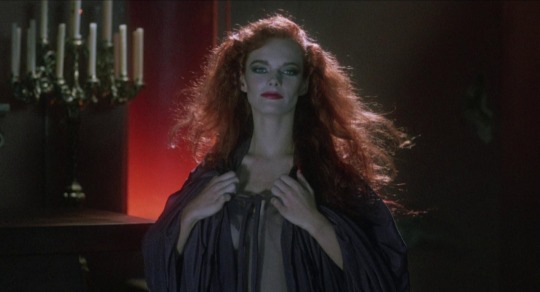




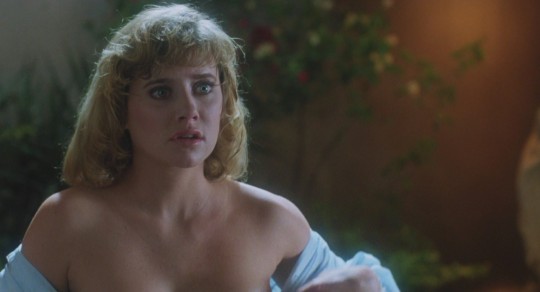



The Unholy (1988)
"Your fall. It troubles you."
"Doesn't it trouble you?"
"As a priest, you're called upon to believe in many unexplained occurrences which you accept as fact. Why should this be so difficult to accept? Fortunately, we were able to keep the incident out of the newspapers."
"But there were witnesses."
"The church is taking care of that. His Holiness does not approve of miracles."
#the unholy#1988#horror film#horror imagery#american cinema#Camilo Vila#Philip Yordan#Fernando Fonseca#ben cross#hal holbrook#ned beatty#jill carroll#william russ#trevor howard#nicole fortier#earleen carey#peter frechette#ruben rabasa#claudia robinson#roger bellon#underwhelming religious horror that cribs heavily from previous films in that subgenre (The Exorcist‚ The Sentinel‚ Prince of Darkness etc)#despite purportedly being filmed from a much older script. Workmanlike and plodding for the most part despite a solid cast#Howard and Holbrook are badly underused and do little more than deliver dry exposition (a waste of both actors) but Cross#equips himself well considering the derivative nature of the material and the under developed role. ned beatty is just kind of there for#ten minutes then swiftly forgotten about (removing his scenes would in no way change the film; another inexplicable waste) but i#gotta hand it to em‚ that final showdown is a masterclass in over the top slop and horror. practical fx wizardry meets disturbed minds#and the result is writ large in a catholic church full of oozing monsters and blood vomit. subtle it is not. actually the ending was reshot#precisely to add those fx: the original as shot is an extra on the vestron blu and actually‚ it may be slightly better. less showy and#gruesome but shot perhaps with a little more style and flair. ho hum ho hum it is what it is
15 notes
·
View notes
Text
Kirk Douglas in 'Detective Story' – the original precinct cop drama on Peacock
Kirk Douglas in ‘Detective Story’ – the original precinct cop drama on Peacock
Detective Story (1951) is the godfather of the TV precinct show. Adapted from Sidney Kingsley’s Broadway play and directed by Hollywood master craftsman William Wyler, it plays out almost entirely in the detective squad room over the course of a long shift. Kirk Douglas stars as Det. James McLeod, a law and order zealot with a bad temper and a reputation for violence. He’s the classic tough cop…

View On WordPress
#1951#Detective Story#DVD#Eleanor Parker#Frank Faylen#George Macready#Horace McMahon#Kirk Douglas#Lee Grant#Peacock#Philip Yordan#Sidney Kingsley#VOD#William Bendix#William Wyler
5 notes
·
View notes
Text
#31DaysofHorror Day 28: Night Train to Terror (1985, dir. Jay Schlossberg-Cohen et al.)
was like "what the fuck is going on" for a full 20 mins before reading somewhere that the three vignettes were originally full features that were cut down to a third of their length and that made everything fall into place. first one has no structure to speak of and is insanely confusing, second one a bit boring, third one is actually really great and has some of the worst SFX i've ever seen. the interludes are a poor excuse for a set-up but the band absolutely slaps. complete trash (affectionate).
#31 days of horror#night train to terror#philip yordan#gregg c. tallas#b movie#horror#nor watches telly#nor does film analysis
0 notes
Photo

55 Days at Peking (1963). During the 1900 Boxer Rebellion against foreigners in China, U.S. Marine Major Matt Lewis, aided by British Consul Sir Arthur Robertson, devises a strategy to keep the rebels at bay until an international military relief force arrives.
Despite a compelling performance from David Niven, this movie is....not good. It’s held down by it’s gratuitous yellowface, it’s caricaturing of China, and it’s all around sense of ‘the poor white man’. It’s just weird, and feels like a really dated film. Still, the costumes and sets are great at least? 4/10.
#55 days at peking#1963#Oscars 36#Nom: Song#Nom: Score#nicholas ray#guy green#robert hamer#philip yordan#Bernard Gordon#charlton heston#ava gardner#david niven#flora robson#china#1900s#america#american#england#romance#war#revolution#yellowface#4/10
6 notes
·
View notes
Text
A Memorable Film Example: "Anna Lucasta" (United Artists, 1958)
A Memorable Film Example: “Anna Lucasta” (United Artists, 1958)

If I were to think back to all of the classic films I’ve seen, and all of the clips that’ve inspired me, I’d have trouble coming up with a favorite. But if I had to name one scene that emotionally impacted me the most I’d have to say it was the cafe scene from Anna Lucasta (United Artists, 1958).
Background of Story and Film
Directed by Arnold Laven and written by Philip Yordan, who also…
View On WordPress
1 note
·
View note